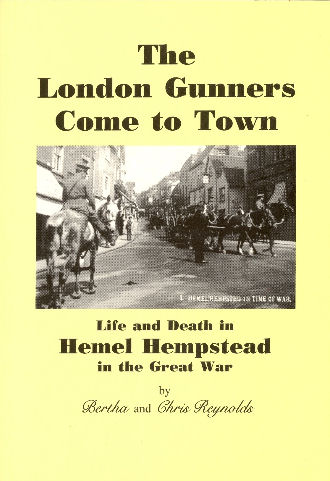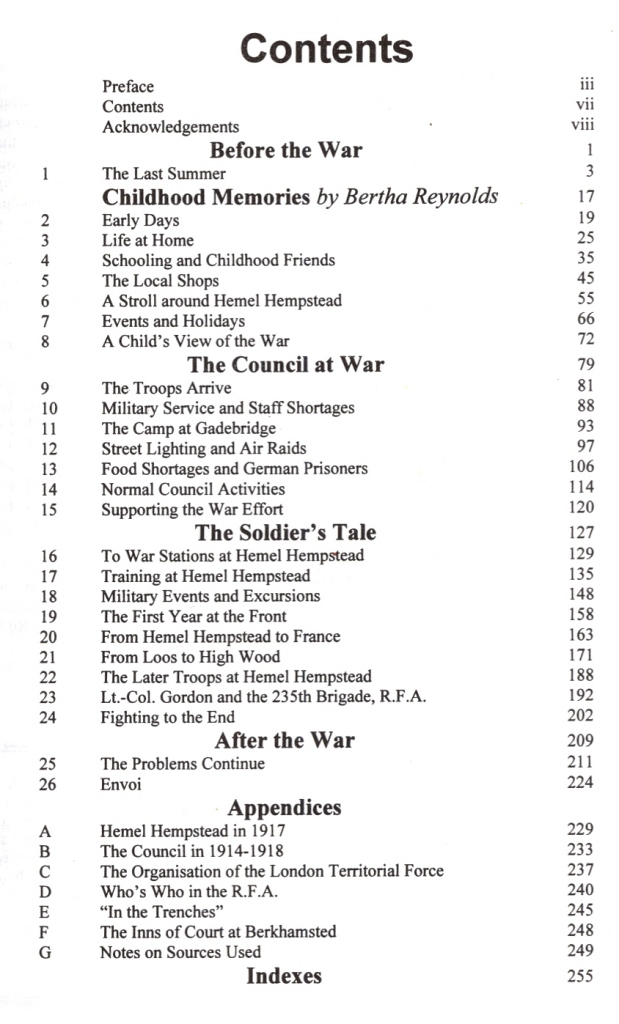|
The London Gunners come to Town Life and Death in Hemel Hempstead in the Great War by Bertha and Chris Reynolds Published by Tring 1995 |
 |
These web pages contain sample pages from the book, together with additional notes relating to other supporting material available on this web site.
A number of reviews of the book are also given.
 |

It is August 1914. Bertha Locke, aged 6, watches the troops march into town and park their guns in a nearby field. Her father, Walter Locke, the Borough Surveyor, rushes from meeting to meeting as the local schools are commandeered. Major Adrian Gordon is billeted in their house. The 2nd London Division (Territorial Force) move to war stations in the St Albans area, and four brigades of the Royal Field Artillery arrive in Hemel Hempstead.
This book describes life in a Hertfordshire market town, its overnight transformation into a garrison town, and the war’s impact from three very different viewpoints.
In "Childhood Memories" Bertha provides a child's view of life in wartime Hemel Hempstead, as remembered 80 years later. She describes life at home, the High Street shops, Marlowes as it was, schooling and childhood friendships. Details are given of local events such as the Statty Fair and seaside holidays, as well as the impact of the war on the family.
"The Council at War" describes the effect that the war, and the arrival of several thousand troops, had on the life in the town, as seen from the Town Hall. An army camp was built at Gadebridge, roads disintegrated under the heavy traffic, a blackout was introduced because of possible zeppelin raids, communal kitchens were opened, there were shortages of men and materials, and German prisoners of war were billeted in the High Street
"The Soldier's Tale" describes life in the town, and military training in the surrounding countryside, as recorded by the soldiers at the time. To emphasise the reason why they had come to Hemel Hempstead, the book briefly follows the military career of Major Gordon of the 2nd London Division (later the 47th Division) on the Western Front. The battle of Loos is described by men from the town. The book also reports on the local men who joined the Hertfordshire Regiment and marched out of town in August, 1914
While many of the people and places named in the book are of purely local interest, similar changes were happening all over England. Military camps and hospitals were built, roads disintegrated under the unaccustomed traffic, street lights were blacked out because of zeppelin raids, communal kitchens were set up, there were manpower shortages, and women and German prisoners of war helped in the fields. For this reason the book will appeal to those interested in social and military history, as well as to the local historian, and to those who want to know what their fathers (or grandfathers) did in the First World War.
The following pages expand the contents of the book and include links to additional information - including extracts from the book, articles published using material from the books, and working notes, and later information.
|
| August 2010 | Page created |